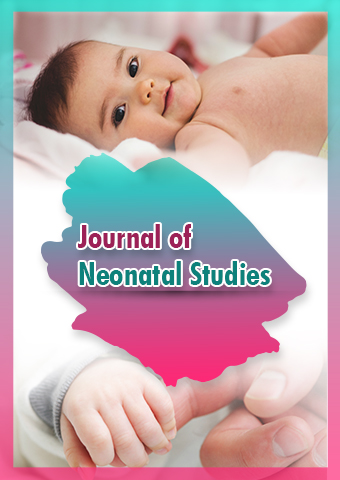Mini Review - Journal of Neonatal Studies (2023) Volume 6, Issue 3
Nurturing the Future: Understanding Neonatal Brain Development
Machoy Monika*
Division of Orthodontics, Pomeranian Medical University in Szczecin, PowstaÅców Wielkopolskich, Poland
Division of Orthodontics, Pomeranian Medical University in Szczecin, PowstaÅców Wielkopolskich, Poland
E-mail: monica.machoy23@gmail.com
Received: 01-June-2023, Manuscript No. jns-23-104260; Editor assigned: 2-June-2023, PreQC No. jns-23- 104260(PQ); Reviewed: 15-June- 2023, QC No. jns-23-104260; Revised: 23-June-2023, Manuscript No. jns-23- 104260(R); Published: 30-June-2023; DOI: 10.37532/jns.2023.6(3).70-72
Abstract
Neonatal brain development is a remarkable and intricate process that lays the foundation for a child’s cognitive, emotional, and physical growth. The early stages of life present a critical window of opportunity, as the developing brain rapidly forms connections and undergoes essential structural and functional changes. This article aims to explore the significance of neonatal brain development, its key stages, and the factors that influence this vital process.
Keywords
Neonatal brain development • Cognitive • Brain • Emotional • Neurodevelopment
Introduction
The significance of neonatal brain development
The brain is the epicenter of human development, and the neonatal period is a crucial time for its growth and organization. During this period, neural circuits are established, synapses are formed, and the foundation for lifelong learning, behavior, and overall cognitive abilities is laid. The quality of early brain development can significantly impact an individual’s cognitive, social, and emotional well-being throughout their lifespan [1].
Key stages of neonatal brain development
Prenatal period
Neurodevelopment begins in the womb, with neural tube formation and the proliferation of neural cells. The development of major brain structures, such as the forebrain, midbrain, and hindbrain, takes place during this period. Genetic factors, maternal health, and environmental influences can shape early brain development [2].
Early postnatal period
The first years of life are characterized by rapid brain growth and synaptogenesis, the formation of connections between neurons. Sensory experiences and environmental stimuli play a crucial role in shaping these neural connections. Adequate nutrition, responsive caregiving, and a stimulating environment contribute to optimal brain development during this phase.
Myelination and neuronal connectivity
Myelination, the process of coating nerve fibers with myelin sheaths, occurs during infancy and early childhood. Myelin facilitates efficient neural communication and enhances the speed of signal transmission. This stage is crucial for refining neural connections and establishing efficient brain networks [3].
Factors influencing neonatal brain development
Genetics
Genetic factors contribute significantly to individual variations in brain development. Inherited traits and genetic variations influence neural connectivity, synaptic plasticity, and vulnerability to certain neurodevelopmental disorders.
Nutrition
Proper nutrition, especially during pregnancy and early infancy, is essential for optimal brain development. Adequate intake of key nutrients, such as omega-3 fatty acids, iron, folate, and other micronutrients, supports neurogenesis, myelination, and overall brain health.
Environmental stimulation
A rich and stimulating environment provides infants with sensory experiences that promote neural growth and synaptic connections. Positive social interactions, language exposure, and ageappropriate sensory stimulation are vital for fostering optimal brain development [4].
Caregiving and nurturing
Responsive and nurturing caregiving promotes a secure attachment between infants and their care givers, creating a supportive environment for brain development. Positive interactions, emotional bonding, and consistent caregiving practices help shape the neural circuits involved in emotional regulation and social cognition.
Early intervention
Early identification and intervention for developmental delays or neurodevelopmental disorders are crucial for optimizing outcomes. Early intervention programs, including therapies and specialized support, can help address developmental challenges and support neural plasticity.
Discussion
Tackling neonatal mortality - challenges, causes, and solutions
Neonatal mortality, defined as the death of infants within the first 28 days of life, continues to be a significant global health concern. Despite significant advancements in healthcare, neonatal mortality remains a pressing issue in many parts of the world. This discussion aims to explore the challenges surrounding neonatal mortality, examine its causes, and discuss potential solutions to reduce infant deaths in this vulnerable period [5, 6].
The global challenge of neonatal mortality
Neonatal mortality represents a substantial burden on global health, accounting for nearly half of all under-five deaths worldwide. According to the World Health Organization (WHO), an estimated 2.4 million neonates die each year, with the majority of these deaths occurring in low- and middle-income countries. The persistence of high neonatal mortality rates underscores the urgent need for effective interventions and strategies to save newborn lives [7].
Causes of neonatal mortality
Preterm birth complications
Preterm birth, defined as birth before 37 weeks of gestation, is a leading cause of neonatal mortality. Premature infants are at higher risk of respiratory distress syndrome, infections, and other complications that can result in death. Improved access to quality antenatal care, including interventions to prevent preterm labor and provide antenatal corticosteroids, can help reduce mortality associated with preterm birth.
Infections
Infections, including neonatal sepsis, pneumonia, and tetanus, contribute significantly to neonatal mortality. Inadequate prenatal care, unhygienic birthing conditions, and limited access to vaccines and antibiotics contribute to the vulnerability of newborns to infections. Strengthening infection prevention measures, promoting breastfeeding, and improving access to essential newborn care can play a critical role in reducing neonatal deaths due to infections [8].
Birth asphyxia
Birth asphyxia, characterized by oxygen deprivation during childbirth, is a leading cause of neonatal mortality. Lack of skilled birth attendants, delays in accessing emergency obstetric care, and insufficient resuscitation efforts contribute to the burden of birth asphyxia-related deaths. Training healthcare providers in neonatal resuscitation techniques, improving access to skilled birth attendants, and promoting birth preparedness can significantly reduce mortality due to birth asphyxia.
Congenital anomalies
Congenital anomalies, including structural or functional abnormalities present at birth, contribute to neonatal mortality. These anomalies can range from heart defects and neural tube defects to genetic disorders. Early detection through prenatal screenings, access to specialized care, and appropriate management can improve outcomes for infants with congenital anomalies.
Maternal health factors
Maternal health conditions have a direct impact on neonatal mortality. Maternal malnutrition, anemia, infections, and other health issues can increase the risk of adverse neonatal outcomes. Addressing maternal health through comprehensive antenatal care, proper nutrition, and management of maternal infections can positively influence neonatal survival rates [9].
Strategies to reduce neonatal mortality
Strengthening healthcare systems
Investing in healthcare infrastructure, improving access to quality maternal and newborn healthcare services, and ensuring skilled birth attendance can significantly reduce neonatal mortality. This includes providing essential obstetric and neonatal care, emergency obstetric services, and access to specialized Neonatal Intensive Care Units (NICUs).
Enhancing antenatal care
Early and regular antenatal care visits are crucial for identifying and managing high-risk pregnancies. Adequate antenatal care involves risk assessment, prenatal screenings, nutritional support, and education on healthy pregnancy practices. It also includes counseling on the importance of skilled birth attendance and newborn care [10].
Conclusion
Understanding the significance of neonatal brain development underscores the importance of providing a nurturing and stimulating environment for infants during the early stages of life. Genetic factors, proper nutrition, environmental stimulation, caregiving practices, and early intervention all contribute to shaping the developing brain. By prioritizing and investing in strategies that support optimal neonatal brain development, we can provide a strong foundation for a child’s cognitive abilities, emotional well-being, and overall lifelong potential.
Acknowledgement
None
Conflict of Interest
None
References
- Ndong A, Diallo A, Faye et al. Clinical photography in surgery: Knowledge, attitudes and practices in Dakar. Int J Surg. 3, 220-2 (2019).
- Solan MC, Calder JD, Gibbons CE et al. Photographic wound documentation after open fracture. Injury. 32, 33-5 (2001).
- Wade FA, Oliver CW, McBride K. Digital imaging in trauma and orthopaedic surgery: is it worth it? J Bone Joint Surg Br. 82, 791-4 (2000).
- Regulation GDP. Regulation EU 2016/679 of the European Parliament and of the Council of 27 April 2016. Official Journal European Union. (2016).
- Cheung A, Al-Ausi M, Hathorn I et al. Patients’ attitudes toward medical photography in the emergency department. Emerg Med J. 22, 609- (2005).
- Harting MT, DeWees JM, Vela KM et al. Medical photography: current technology, evolving issues and legal perspectives. Int J Clin Pract. 69, 401-9 (2015).
- Hsieh C, Yun D, Bhatia AC et al. Patient perception on the usage of smartphones for medical photography and for reference in dermatology. Dermatol Surg. 41, 149-54 (2015).
- Lau CK, Schumacher HH, Irwin MS. Patients' perception of medical photography. J Plast Reconstr Aesthet Surg. 63, e507-11 (2010).
- Accetta JL, Schoenfeld J, Bitar C et al. Smartphones in Dermatology: Acceptance of Smartphone Photography by the Informed Patient. Dermatol Surg. 46, 1131-3 (2020).
- Jordan MC, Jovic S, Gilbert F et al. Smartphone-based photographic wound documentation improves the quality of medical accounting in orthopedic and plastic surgery. Unfallchirurg. (2020).
Indexed at, Google Scholar, Crossref
Indexed at, Google Scholar, Crossref
Indexed at, Google Scholar, Crossref
Indexed at, Google Scholar, Crossref
Indexed at, Google Scholar, Crossref
Indexed at, Google Scholar, Crossref
Indexed at, Google Scholar, Crossref
Indexed at, Google Scholar, Crossref

